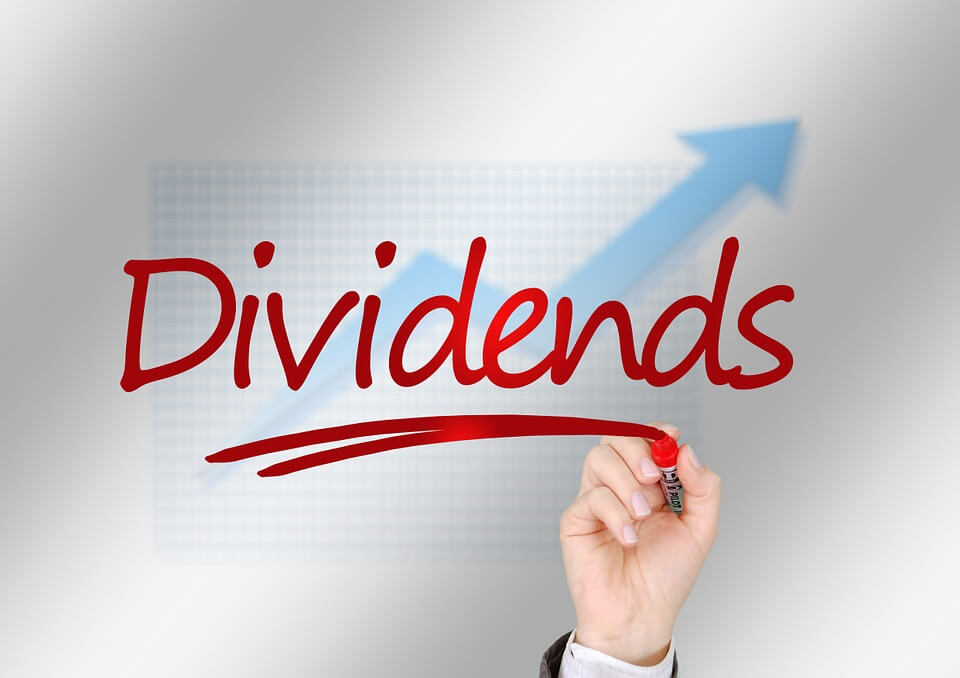Stocks or equities are shares in companies, a company’s ownerships lies in all the shares of the enterprise. To become a dividend investor you have two main choices: Dividend ETFs vs Dividend Stocks.
Dividend ETFs vs Dividend Stocks Primer
Owning a stock is, in fact, owning a slice of the company. Such ownership gives you the right to any profits that the board of directors would release as dividends to shareholders. Companies engage in business to make a profit; they make a profit by creating value at a price and selling it at the higher price.
Dividend investing is focuses on stocks which either have the potential of earning dividends in the future or are producing dividends today. The attraction of dividend investing is their “perpetual” nature, as long as the company makes a profit and the board of directors releases that profit as a dividend then that income remains “perpetual”.
If the dividend income earned is higher than one’s expenses, then dividends can be the backbone of a retirement plan. One of the keys to dividend investing is that they are relatively inflation-proof unlike interest on p2p loans , or bonds, Bitcoin or Gold.
There are two main ways to invest in dividend stocks one is through ETFs (Electronic traded funds) or through individuals stocks. ETFs are groupings of individual stocks managed according to an index or a strategy. ETFs offer more diversity. When you own one dividend stock, you are exposing all of your capital to the risks of that particular stock, if you own several, you are spreading your risk across different Industries and possibly countries.
Dividends Basics
To earn a dividend you first need own the stock, and secondly, you need to own it on the ex-dividend date. In general, this is two days before the record date, on this date the company announces the dividend payment.
The dividend can be in the form of a cash dividend or the equivalent in company stock.
The board of directors have two options when it comes to profits; they can either be invested in the company, or they can distribute them as profits. Businesses that distribute dividends as profits are not investing (all of) this money in the enterprise. Capital is needed to fuel growth, without it, there is a much lower likelihood that these companies will grow in the future. Companies such as Google tend to invest profits in research and development which could create more innovation and more value resulting in more profits.
SWOT Analysis of dividend investing
Strengths
- Selecting dividend paying stocks is a data-rich process. Companies listed on the Stock Exchange are obliged to release audited accounts; these provide the basis on which one can make the investment decisions. This is a process which requires a lot of work, knowledge and experience. Expect years of practice before you can consider yourself a good stock analyst.
- Several dividends paying companies are household names, which you can identify with and may already be familiar with their product line. If you like the brand, it does not necessarily mean they are a good investment, but this gives you some ideas to start your research.
Weaknesses
- Dividend ETFs vs Dividend Stocks should take into account that the share price of both ETFs and Stocks may go down, you need to focus on both the return of capital and the return on capital.
- You have to pay yearly taxes on dividends, if however, you are investing for capital growth you only pay the tax man when you generate the income and which may be several years after your initial purchase. You lose out when you release some of that capital to the government on compound growth.
- When buying a stock, you incur fees, with Degrio you have the option of one free trade a month.
- When buying an ETF you also incur a charge at the time of purchase from your stock trading platform, In addition to this, there are other fees. Make sure to check the prospectus to understand their fee structure.
- Even for the dividend aristocrats & kings, the past is not a guarantee of the future.
- Dividend investing is frequently compared to real estate investing, these two are similar but not equal in nature. Investing directly in a buy-to-let property with a mortgage gives you leverage, You can do the same with stocks. However, rates on margin trading are higher and can be called in at a moment’s notice.
- Dividend investors tend to buy and hold; this reduces transaction costs on their portfolios.
Opportunities
- Dividend Aristocrats are a group of stocks which have raised their dividend for 25 or more years. Dividend Kings have increased their dividend payouts for more than 50 years.
- Some companies offer dividends every quarter, if you structure your portfolio you can earn a dividend every month for example:
January, April, July, October
- Cisco Systems
- Comcast
- FedEx
February, May, August, November
- Apple
- Morgan Stanley
- Texas Instruments
March, June, September, December
- J.P. Morgan Chase
- A dividend stock can be measured using three key benchmarks.
- Dividend growth
- Profit growth
- Payout ratios
- Dividend growth is the rate by which the dividend increases every year. Profit growth is the actual increase in profits. The payout ratio is the proportion of profits which are paid to investors as dividends. High payout ratios are not sustainable because at some point the company needs to maintain infrastructure or whether a market downtown. A high payout ratio does not provide flexibility to manage these situations.
- Dividend investing tends to select companies which have a positive cash flow; this weeds out any companies which engage in accounting wizardry to show positive results.
- Shareholders dividends expectations instil discipline in a company. The remuneration of the board of directors sometimes is connected on the dividends being issued.
Dividend ETFs vs Dividend Stocks Investment Strategies
- Stock picking
- Identify Industries which are not easily disrupted through technology.
- Within that sector identify companies which have a strong moat or competitive advantage.
- From that group find business having long and strong histories.
- Within this group find businesses which are undervalued or hated for some unjustified reason.
- Dividend ETFs
- Diversify across multiple ETFs.
- Choose ones which follow indexes.
- Focus on the ones with lower fees.
Threats
- Dividend investors do not look at short-term volatility; their focus is on the dividend. Life events may force the dividend investor to liquidate in an emergency. This could happen during a bear market, and the dividend investor would have to sell at a loss.
- The universe of dividend investing is rather small; this does not allow for broad diversification within the stock market.
- When interest rates rise the price of dividend stocks tends to fall.
- Dividend investors tend to ignore annuities, coupons and capital appreciation. This reduces the pool of investment vehicles and risk mitigation strategies available.
- In a low-interest-rate environment, those seeking yield from capital tend to use dividend investing as one of their strategies. This creates an asset bubble in this sector. In particular, the Baby Boomers are trying to convert cash into cash flow. I suspect that for many the underlying assets and not given much consideration, and their only measure is the return. Given the very limited opportunities for cash flow investments, dividend stocks will always be in demand. If the interest rate rise this will have an impact on these stocks, of course, an interest rate rise of sub 1% does not give investors any strong reasons to abandon dividend stocks.
- Dividends tend to be tax inefficient. It is more tax efficient for to keep profits in the company rather than releasing them as dividends. Of course, this is only in the case that the corporation can create actual growth with that capital.
- Dividend investors tend to ignore the total return of their whole portfolio.
Dividend ETFs Examples
- Name Expense Symbol
- FlexShares Quality Dividend Index Fund ETF 0.4 QDF
- iShares Core High Dividend ETF 0.1 HDV
- PowerShares S&P 500 High Dividend Low Volatility ETF 0.3 SPHD
- ProShares S&P 500 Dividend Aristocrats ETF 0.4 NOBL
- S&P Dividend ETF 0.4 SDY
- Schwab U.S. Dividend Equity ETF 0.1 SCHD
- Vanguard Dividend Appreciation ETF 0.1 VIG
- Vanguard High Dividend Yield ETF 0.1 VYM
- WisdomTree LargeCap Dividend Fund 0.3 DLN
- WisdomTree U.S. Quality Dividend Growth ETF 0.3 DGRW
Dividend Stocks Examples
- Chubb Limited (CB)
- General Dynamics (Ticker Symbol: GD)
- Linear Technology Corporation (LLTC)
- Praxair (PX)
- Realty Income (O)
- Roper Industries (ROP)
- Stryker Corporation (SYK)
- United Technologies Corporation (UTX)
- 3M (MMM)
In conclusion: Dividend ETFs vs Dividend Stocks.
- Diversification: Dividend ETFs – Broad vs Dividend Stocks – Thin
- Fees: Dividend ETFs: Higher Dividend Stocks: Lower
- Active dividend ETFs vs Index Dividend ETFs: Statistics show that stock picking works only in rare cases.
- Both the Dividend ETfs and Stocks have the potential to generate passive income consistently.
Comments:
- What is your dividend investing strategy?
- Which stocks are you invested in and why?












